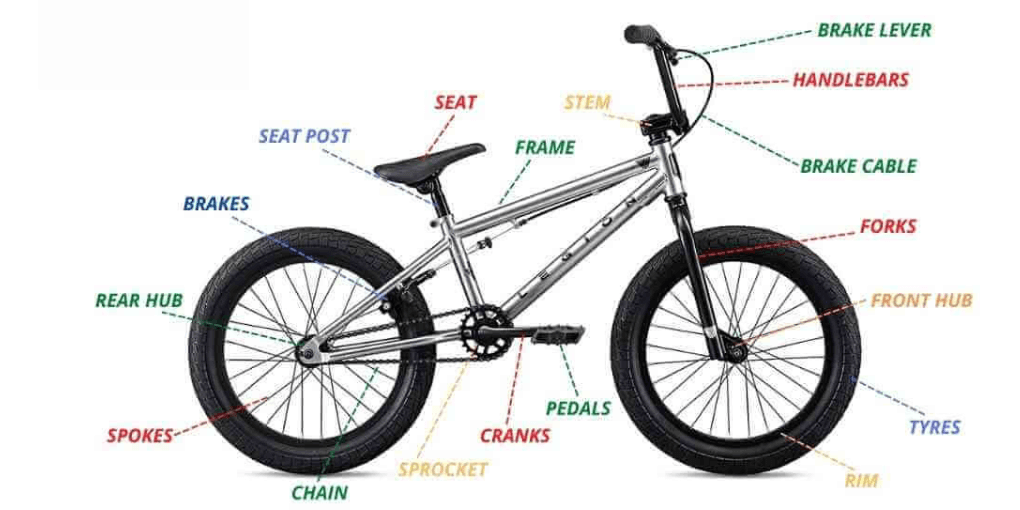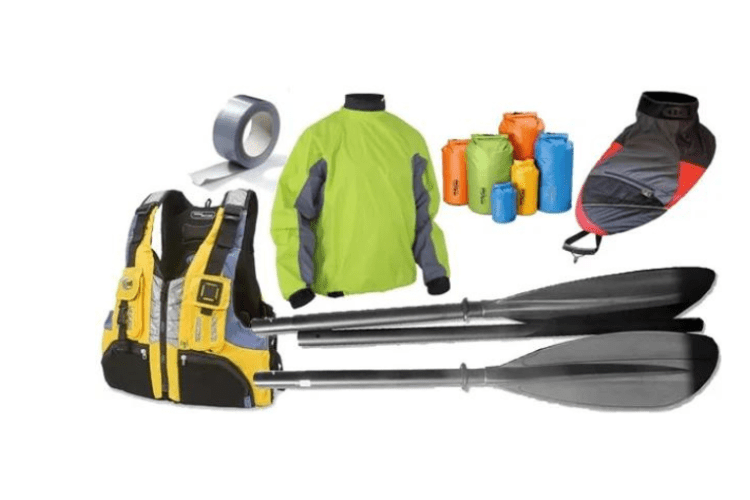Breaking Down BMX Bike Anatomy: What You Need to Know
The world’s largest BMX bike was over 50 feet long and was built in Japan. Imagine riding that beast through the streets!
In this blog, I am going to explain the ins and outs of BMX bike anatomy. We’ll take a closer look at all the different parts that make up these cool bikes, from the frame to the pedals.

Why Knowing About BMX Bike Anatomy Is Important
Let’s learn a bit about the essence of BMX anatomy.
Safety First: The knowledge of how your BMX bike works can help keep you safe while riding.
Better Riding: When you are educated about all the bike parts, it helps you ride better and have more fun.
Make It Yours: Knowledge of bike anatomy lets you change and customize your bike to fit you.
Dave Mirra’s Wise Words
“The biggest risk in life is not taking one,” Mirra says it’s important to take chances. Learning about your bike is one way to take on new challenges and have fun.
Let’s Start Exploring
New Things: Learning about bike parts, you’ll find out how they work and how to use them.
Try Something New: While learning can be challenging, it’s exciting to try new things and see what you can do.
Join the Group: It would give you a great way to make friends and learn even more.
Overview of a BMX Bike
Your bike’s frame, forks, and handlebars are important for riding safely and smoothly. Let’s take a closer look at these key parts and learn how they work together to make your BMX adventure awesome!
Frame
What it does: The frame is like the skeleton of your BMX bike. It holds everything together and keeps it strong.
Different Types: Frames can be made from different stuff like steel, aluminum, or carbon fiber. Each type has its own good things, like being strong or light.
Types of Frames: There are frames for doing tricks and frames for going fast. You pick the one that’s best for how you want to ride.
Forks
Helps You Steer: The forks hold the front wheel and let you turn the bike.
Different Kinds: Some forks are stiff, and some have springs to help with bumps.
Picking Forks: You choose forks based on where you ride and how you like to ride.
Handlebars
How You Control the Bike: Handlebars are what you hold onto when you ride. They help you steer and stay balanced.
Different Styles: There are lots of kinds of handlebars. Some are tall, some are wide, and some are in-between.
How They Feel: The kind of handlebars you use can make riding feel different. You pick the ones that feel best for you.
Components of a BMX Bike
From the wheels to the brakes and drivetrain, each component plays a crucial role in how your bike rides and performs.
Wheels
Parts of the Wheel: A BMX wheel has three main parts: the rim, spokes, and hub.
Rim: This is the circle part that holds the tire. It’s important for keeping the tire in place and giving it shape.
Spokes: Spokes are like the bars that connect the rim to the center of the wheel (the hub). They help make the wheel strong and keep it round.
Hub: The hub is the center part of the wheel. It holds the axle and lets the wheel spin smoothly.
Tires
Different Types: BMX tires come in different styles for different kinds of riding. Some are smooth for riding on pavement, and some have knobs for riding on dirt.
Features: Tires have different features like size, tread pattern, and grip. You pick the tires that are best for how you like to ride.
Brakes
Why they’re important: Brakes help you stop your bike safely. They’re super important for staying in control and avoiding crashes.
Types of Brakes: There are different kinds of brakes for BMX bikes, like caliper brakes, U-brakes, and disc brakes. Each type works a little differently, but they all do the same thing – help you stop.
Drivetrain
What it Does: The drivetrain is what makes your bike move. It includes parts like the crankset, chain, and corset.
Crankset: This is the part with the pedals attached. When you pedal, it makes the chain turn, which moves the bike.
Chain: The chain is what connects the pedals to the wheel. It transfers the power from your legs to the bike.
Cogset: The cogset is the set of gears on the back wheel. It lets you change how easy or hard it is to pedal, depending on the terrain you’re riding on.
Advanced BMX Bike Anatomy
In this section, we’ll explore advanced components like pedals, seat and seatpost, and pegs. Each part plays a unique role in how you ride and perform tricks.
Pedals
What They Do: Pedals are what you push with your feet to make the bike go. They’re super important for riding!
Different Types: There are lots of kinds of pedals, like platform pedals, clipless pedals, and cage pedals. Each type has its own good things, like grip or how easy it is to take your feet off.
Benefits: The kind of pedals you use can make a big difference in how comfortable and in control you feel when riding.
Seat and Seatpost
Where You Sit: The seat is what you sit on when you ride your BMX bike. The Seatpost is the pole that holds the seat up.
Role in Riding: The seat and seatpost help you stay comfortable while riding by giving you a place to sit and adjust your position.
Variations: Seats and seatposts come in lots of different styles and sizes. You pick the ones that feel best for you and your riding style.
Pegs
What They Are: Pegs are metal tubes that stick out from the axles of your BMX bike. They’re used for doing tricks and balancing.
How They’re Used: When you do tricks, you stand on the pegs with your feet. They help you balance and do cool moves like grinds and stalls.
Tricksters’ Tools: Pegs are a must-have for BMX riders who love to do tricks and show off their skills. They’re like your secret weapon for pulling off awesome moves!
Customization and Upgrades
In this part, we’ll learn why changing your bike is an important and popular improvements that can make your ride smoother, safer, and cooler. Let’s find out how to make your bike unique for an amazing riding adventure!
Why Customization Matters
Making It Your Own: When you customize your BMX bike, you’re making it special, just for you!
Express Yourself: People change their bikes to show who they are and what they like. It’s like painting a picture of yourself on wheels!
Better Performance: Customizing your bike can make it work better for you. You can make changes to fit how you ride and what you like.
Popular Upgrades
New Wheels: If you get new wheels, your bike can go smoother and faster. It’s like giving your bike a turbo boost!
Better Brakes: Better brakes can help you stop quicker and safer. Safety first!
Cool Colors: Painting your bike or adding colorful parts makes it look awesome. You can pick colors that match your style and make you feel proud to ride.
Lighter Parts: Changing heavy parts for lighter ones makes your bike easier to ride and do tricks with. It’s like making your bike feel weightless!
Benefits of Upgrades
Improved Performance: Upgrades can make your bike work better and feel smoother to ride.
Increased Safety: Some upgrades, like better brakes, can help keep you safe while riding.
Personalized Style: Customizing your bike lets you show off your unique style and make it stand out from the crowd.
Enhanced Fun: When your bike feels just right and looks awesome, riding becomes even more enjoyable and exciting!
Maintenance Tips
Just like how you take care of yourself, your BMX bike needs regular care too! Regular maintenance keeps your bike safe to ride and helps it last longer.
Let’s go through a checklist of important tasks to keep your bike running smoothly and ready for your next ride.
Regular Maintenance
Keeping Your Bike Happy: Just like how you take care of yourself, your BMX bike needs regular care too.
Why it Matters: Regular maintenance keeps your bike safe to ride and helps it last longer. It’s like giving your bike a check-up to make sure everything is working right.
Maintenance Checklist
Check Your Tires: Make sure they’re inflated to the right pressure and not worn out.
Inspect Your Brakes: Look for any signs of wear and make sure they’re working properly.
Oil Your Chain: Keep your chain clean and lubricated so it runs smoothly.
Tighten Bolts and Nuts: Check all the bolts and nuts on your bike to make sure they’re tight and secure.
Inspect Your Frame: Look for any cracks or damage to your frame that could make riding unsafe.
Test Your Gears: Make sure your gears shift smoothly and aren’t skipping.
Clean Your Bike: Give your bike a good clean to keep it looking nice and prevent rust.
Check your suspension (if you have it): Make sure your suspension is working properly and not leaking any oil.
Inspect your handlebars and forks: Make sure they’re straight and not bent or damaged.
Listen to Your Bike: Pay attention to any strange noises or vibrations while riding, as they could indicate a problem that needs fixing.
Safety Considerations
The right safety gear and being careful are life saviors. You can have a ton of fun riding your BMX bike while staying safe and sound!
Importance of Safety
Keeping Yourself Safe: Safety is super important when you ride your BMX bike. It’s like putting on armor to protect yourself while having fun.
Why it’s Important: Safety gear and being careful help stop you from getting hurt. It’s like having a shield to keep you safe while you have a blast riding your bike.
Safety Gear
Helmet: A helmet is the most important thing to wear when you ride. It protects your head if you fall down.
Pads: Knee and elbow pads are also really important. They keep your knees and elbows safe from scrapes and cuts if you fall.
Gloves: Gloves are good to wear too. They keep your hands safe and comfy while you’re holding onto the handlebars.
Extra Safety Tips
Check Your Bike: Make sure your bike is in good shape before you ride. Everything should work like it’s supposed to.
Know Your Limits: Only do tricks or ride in places that you feel comfortable and safe.
Pay Attention: Always watch where you’re going and what other people are doing around you.
Ride in Safe Places: Pick places to ride that are safe and free from things that could hurt you.
Conclusion
In this blog, we’ve explored the fascinating world of BMX biking, and discussed the essential parts of these amazing machines. From the frame to the pedals, we’ve learned how each component contributes to the excitement of BMX riding.
Now that you’ve learned about BMX bike anatomy, it’s time to try it out. Take your bike for a ride, practice some new tricks, and continue your journey into the thrilling world of BMX biking.
BMX biking is all about fun and adventure. So, gear up, get out there, and let the good times roll!
FAQs
Learning about how your bike works keeps you safe, helps you ride better, and lets you make it your own.
Important parts include the frame, forks, handlebars, wheels, brakes, drivetrain, pedals, and seat.
Choose based on material (like steel or aluminum) and what you want to do with it, like tricks or going fast.
BMX bikes can have different brakes like caliper brakes or disc brakes, all to help you stop safely.
Customizing your bike makes it work better for you and lets you show off your style while you ride.


